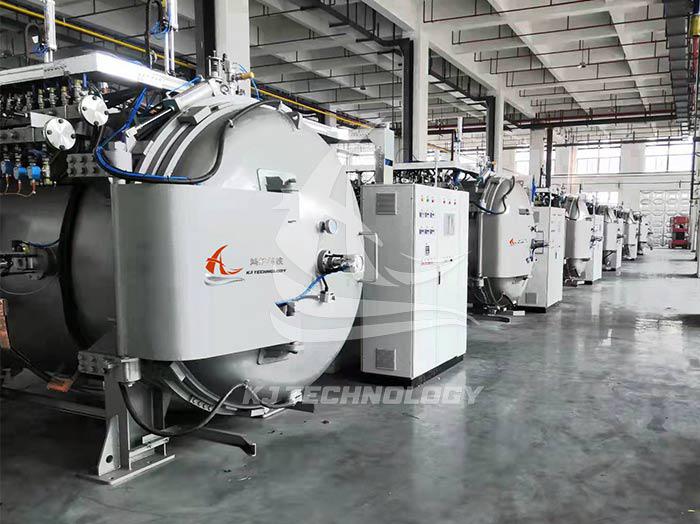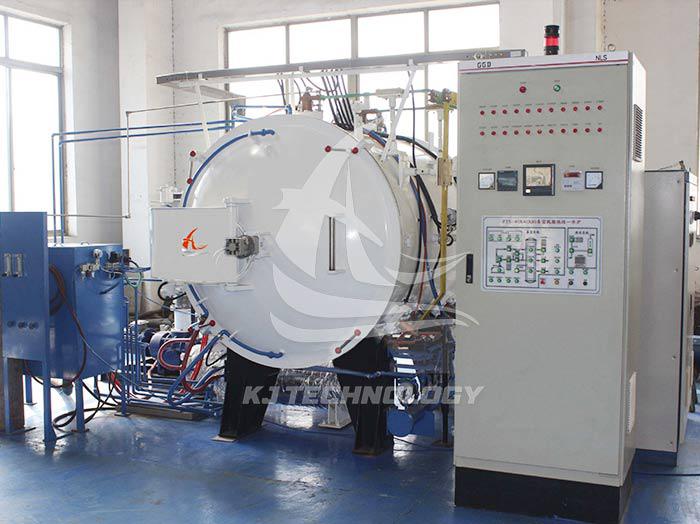Working principle of vacuum annealing furnace
 03-25-2025 Author: KJ technology
03-25-2025 Author: KJ technology
The working principle of a vacuum annealing furnace is mainly based on the scientific principles of heat transfer and material phase transition. The following is a detailed explanation:
1. Core principle
The vacuum annealing furnace reduces the contact between materials and gases such as oxygen and nitrogen during the annealing process by creating a high vacuum environment, effectively avoiding oxidation and pollution. In the furnace, the material is uniformly heated to a predetermined temperature through resistance heating, induction heating, or other heating methods.
2. Workflow
Placement of materials: First, place the materials to be processed in the furnace.
Vacuuming: By using a vacuum system, the interior of the furnace chamber is evacuated to a negative pressure state, eliminating gases such as oxygen and creating an environment close to vacuum. This process usually involves multiple types of pumps, such as rotary vane pumps, Roots pumps, etc., which work together to achieve a high vacuum state.
Heating: The heating system begins to heat up, gradually raising the temperature inside the furnace to the desired annealing temperature. During this process, due to the vacuum environment inside the furnace, the surface of the material is not affected by oxidation, which helps to maintain the excellent performance of the material.
Annealing treatment: At high temperatures, the atoms inside the material gain sufficient energy to undergo microstructural changes such as diffusion and recombination, thereby eliminating residual stresses inside the material, improving its crystal structure, and enhancing its plasticity and toughness.
Cooling: After annealing is completed, the cooling system begins to work, rapidly cooling the processed material to improve production efficiency.
3. Key components and their roles
Furnace body: The outer shell of the entire equipment has good insulation and sealing performance to maintain the vacuum degree and temperature stability inside the furnace.
Heating system: Provides precise temperature control to ensure uniform heating of materials. The heating elements are evenly and reasonably distributed inside the furnace.
Vacuum system: responsible for extracting gas from the furnace and creating a high vacuum environment. The vacuum pump is a key equipment for achieving this environment, which creates and maintains the required low pressure state by removing air and other gas molecules from the vacuum annealing furnace.
Cooling system: capable of quickly cooling processed materials and improving production efficiency. The air cooling system consists of high-power motors, high air volume, and high-pressure impellers, which can achieve rapid and uniform cooling of workpieces.
Control system: Accurately monitor and regulate parameters such as temperature, vacuum degree, and time. Usually, PID automatic power regulation is used, and temperature control is stable. The heating chamber can also adopt an all metal structure, and the electrical control system adopts PLC and programmable temperature controller, with three control modes: automatic, semi-automatic, and manual, making the operation flexible.
In summary, the working principle of a vacuum annealing furnace is to create a high vacuum environment and use a heating system to heat the material to the desired temperature, combined with a control system to achieve precise control of the entire annealing process. This treatment method can effectively reduce adverse effects such as surface oxidation and carbonization of materials, and improve the performance and quality of materials.








